Next Generation Air Dominance Fighter Program Involves Three Demonstrators: Report
New revelations about the secretive NGAD program indicate two companies are in the final running to build the Air Force’s next combat jet.
The competition to provide the U.S. Air Force with its Next Generation Air Dominance, or NGAD, stealth sixth-generation crewed tactical jet is reportedly down to two prime contractors or teams of contractors. A final decision on what is now assumed to be a winner-takes-all competition is expected sometime next year and, perhaps most intriguingly, there are said to be no fewer than three NGAD demonstrators now in existence. These latest revelations come from a recent podcast from the Defense & Aerospace Report, which you can find here.
Speaking on the podcast are Vago Muradian, the editor-in-chief and host of the Defense & Aerospace Report, and J.J. Gertler, director of The Defense Concepts Organization and senior analyst at the Teal Group.
It’s worth noting at this point that, while the NGAD terminology is used in the podcast to refer to the crewed sixth-generation combat jet that will be at the center of NGAD, the program of that name is a much broader initiative, also including efforts focused on the development of advanced drones with high degrees of autonomy, as well as new jet engines, weapons, electronic warfare suites, sensors, networking ecosystems, battle management capabilities, and more.
The Defense & Aerospace Report, citing unnamed “sources involved in the [NGAD] program,” concludes that the existence of three NGAD demonstrators indicates that, at one point, three prime contractors or teams were involved and that this has since been whittled down to two. The podcast also states that the likely candidates were Boeing, Lockheed Martin, and Northrop Grumman — as the established heavyweights in terms of U.S. combat aircraft manufacturers, these three were always expected to be at the center of the competition.
The Air Force has previously confirmed that a final decision on the chosen NGAD combat jet design is slated for 2024, but there’s no more detail as to when exactly.
Overall, having two teams competing for the crewed combat jet element of NGAD is not altogether surprising. The Joint Strike Fighter program that led to today’s F-35 stealth jet also involved two competing designs, from Boeing and Lockheed Martin, while back in the 1980s, the Advanced Tactical Fighter program saw Lockheed Martin compete with Northrop Grumman, with the former being selected to build the F-22 Raptor.
So far, however, the Air Force has not released any details of prime contractors involved in NGAD, or potential teaming arrangements under which different companies may be working together on their proposals.
In contrast to previous fighter competitions, NGAD remains cloaked in secrecy, although last month the Air Force did release a classified contract solicitation for the engineering, manufacturing and development (EMD) phase of the program. You can read our analysis of that recent development here.
“This solicitation release formally begins the source selection process providing industry with the requirements the [Department of the Air Force] expects for NGAD, as the future replacement of the F-22,” the press release stated. “Further information on the NGAD Platform’s technical and programmatic details are classified to protect operational and technological advantages.”
The NGAD acquisition strategy will invigorate and broaden the industrial base to deliver rapid and innovative warfighting capabilities,” the press release continued. “The strategy incorporates lessons learned from recent Air Force acquisition programs and will leverage open architecture standards. This approach will enable the government to maximize competition throughout the life cycle, provide a larger, more responsive industry base and drastically reduce maintenance and sustainment costs.”
In June last year, the Secretary of the Air Force Frank Kendall stated that the NGAD combat jet was entering its EMD phase, although these comments were followed by the announcement of an Inspector General investigation into the maturity of that component of the program. He clarified last September that it had not formally reached that milestone.
We do know, however, that at least one demonstrator design has already been flying for some years now on behalf of NGAD. As for the three demonstrators mentioned in the Defense & Aerospace Report podcast, it’s not clear if all three of those mentioned are flying demonstrators, whether they are crewed or not, and if one or more may be a static test airframe. It could also be the case that these demonstrators are something closer to testbeds in the traditional sense, being used to explore subsystems and technologies, rather than being employed as surrogates for airframe design solutions intended to be used in a production NGAD combat jet.
In the past, Kendall has openly talked about “X-planes,” in the plural when describing the evolution of what became NGAD. There is a possibility that these demonstrators (including the one disclosed back in 2020) are products of those efforts. At the same time, we cannot rule out the use of one or more existing aircraft that could be used as surrogates for various kinds of related testing, too. We know, for example, that F-22s are being used for this purpose, as you can read about here.
Still, based on the context this is being discussed in, it would seem that these are likely actual purpose-built demonstrators, not surrogates.
As for the expected winner-takes-all resolution to the competition for the NGAD’s combat jet, this serves only to raise the stakes in whatever is already an extremely hotly contested program. After all, it’s possible that the jet that emerges as the winner will be America’s last advanced crewed tactical aircraft in the fighter-type category.
From what little we do know about the NGAD combat jet, this is certainly set to be a highly capable and very expensive item, each platform costing “multiple hundreds of millions of dollars,” according to Kendall.
Each of these jets is expected to be packed with a host of exotic features and subsystems, among them, broadband stealth, advanced electronic, and other ‘spectral’ warfare capabilities. Performance-wise, the design of the NGAD combat jet will emphasize significant range and payload capabilities, of the kind that will be especially applicable to future conflicts in the Asia Pacific region.
Lockheed Martin
The company that walks away with the contract for the NGAD combat jet might expect to build around 200 copies of the aircraft, based on an announcement last year from Secretary Kendall. At the same time, he said that the Air Force planned to acquire at least 1,000 Collaborative Combat Aircraft (CCA) drones that will be tailored to operate alongside the crewed jet. These numbers also factor in being able to operate with 300 Air Force F-35A stealth fighters and, of course, are still subject to change — and they likely will — based on a host of factors.
That said, for the two companies that will apparently leave empty-handed as far as contracts for the NGAD combat jet are concerned, all is not lost, thanks to the expansive nature of the wider NGAD program.
Aside from the CCA program, there is scope for the Air Force to order hundreds, or even thousands more drones of various other types to support the NGAD and broader air power capabilities.
Then there are the multiple systems and subsystems that will go into each NGAD combat jet and which will see engagement from numerous contractors, of various sizes, regardless of which company is chosen as the prime. There is also the possibility that one or both of the losing candidates could even be involved in the production of the chosen combat jet. Already, for example, Northrop Grumman plays a vital role in the F-35 program, being responsible for the one current production line that makes center barrels for all three Joint Strike Fighter variants.
But there are plenty of challenges, too, for whichever company lands the prime contractor spot for the NGAD combat jet.
Not least, there’s the Air Force’s ambition to have NGAD combat jets starting to enter operational service in the early part of the next decade. Even with one or more demonstrators flying, that’s an extremely compressed schedule, bearing in mind that a contract for the EMD phase is not scheduled until sometime next year.
The Air Force has also insisted that the program avoid the “acquisition malpractice” that it says has adversely affected the F-35. Among others, the service wants a firmer design from the outset and U.S. government ownership of at least a significant portion of the data rights to it. This is considered necessary to expedite any future upgrades and spiral development, and to keep one contractor from having a monopoly on sustainment and evolution of the jet, and especially its software backbone, going forward.
Another factor in NGAD is the relationship between this program and the one being pursued separately by the U.S. Navy. Also known as NGAD, the Navy program is also based around a crewed sixth-generation combat jet, known as F/A-XX. The Navy has very distinct requirements for what it needs in a crewed combat jet and the service is investing heavily in its own program, which also points to significant progress having been achieved already. While we know there is at least some crossover between the two programs, we don’t know how much and to what degree success for one contractor in the Air Force program could influence the Navy’s choice in its own version.
Still, the fact that the Navy will be picking its own manned NGAD aircraft means even the losers of the USAF tender could be able to win the Navy's, and they would likely be in a better place to compete if they have produced a demonstrator for the USAF.
Clearly, momentum is gathering behind the Air Force’s NGAD combat jet program. While firm details remain few and far between, it is obvious that, in the shadows, fierce competition is being waged, with the prize being to develop and build the service’s cutting-edge tactical combat jet that is expected to serve for many decades to come and be the centerpiece of the entire NGAD enterprise.
Contact the author: thomas@thedrive.com

The competition to provide the U.S. Air Force with its Next Generation Air Dominance, or NGAD, stealth sixth-generation crewed tactical jet is reportedly down to two prime contractors or teams of contractors. A final decision on what is now assumed to be a winner-takes-all competition is expected sometime next year and, perhaps most intriguingly, there are said to be no fewer than three NGAD demonstrators now in existence. These latest revelations come from a recent podcast from the Defense & Aerospace Report, which you can find here.
Speaking on the podcast are Vago Muradian, the editor-in-chief and host of the Defense & Aerospace Report, and J.J. Gertler, director of The Defense Concepts Organization and senior analyst at the Teal Group.
It’s worth noting at this point that, while the NGAD terminology is used in the podcast to refer to the crewed sixth-generation combat jet that will be at the center of NGAD, the program of that name is a much broader initiative, also including efforts focused on the development of advanced drones with high degrees of autonomy, as well as new jet engines, weapons, electronic warfare suites, sensors, networking ecosystems, battle management capabilities, and more.
The Defense & Aerospace Report, citing unnamed “sources involved in the [NGAD] program,” concludes that the existence of three NGAD demonstrators indicates that, at one point, three prime contractors or teams were involved and that this has since been whittled down to two. The podcast also states that the likely candidates were Boeing, Lockheed Martin, and Northrop Grumman — as the established heavyweights in terms of U.S. combat aircraft manufacturers, these three were always expected to be at the center of the competition.
The Air Force has previously confirmed that a final decision on the chosen NGAD combat jet design is slated for 2024, but there’s no more detail as to when exactly.
Overall, having two teams competing for the crewed combat jet element of NGAD is not altogether surprising. The Joint Strike Fighter program that led to today’s F-35 stealth jet also involved two competing designs, from Boeing and Lockheed Martin, while back in the 1980s, the Advanced Tactical Fighter program saw Lockheed Martin compete with Northrop Grumman, with the former being selected to build the F-22 Raptor.
So far, however, the Air Force has not released any details of prime contractors involved in NGAD, or potential teaming arrangements under which different companies may be working together on their proposals.
In contrast to previous fighter competitions, NGAD remains cloaked in secrecy, although last month the Air Force did release a classified contract solicitation for the engineering, manufacturing and development (EMD) phase of the program. You can read our analysis of that recent development here.
“This solicitation release formally begins the source selection process providing industry with the requirements the [Department of the Air Force] expects for NGAD, as the future replacement of the F-22,” the press release stated. “Further information on the NGAD Platform’s technical and programmatic details are classified to protect operational and technological advantages.”
The NGAD acquisition strategy will invigorate and broaden the industrial base to deliver rapid and innovative warfighting capabilities,” the press release continued. “The strategy incorporates lessons learned from recent Air Force acquisition programs and will leverage open architecture standards. This approach will enable the government to maximize competition throughout the life cycle, provide a larger, more responsive industry base and drastically reduce maintenance and sustainment costs.”
In June last year, the Secretary of the Air Force Frank Kendall stated that the NGAD combat jet was entering its EMD phase, although these comments were followed by the announcement of an Inspector General investigation into the maturity of that component of the program. He clarified last September that it had not formally reached that milestone.
We do know, however, that at least one demonstrator design has already been flying for some years now on behalf of NGAD. As for the three demonstrators mentioned in the Defense & Aerospace Report podcast, it’s not clear if all three of those mentioned are flying demonstrators, whether they are crewed or not, and if one or more may be a static test airframe. It could also be the case that these demonstrators are something closer to testbeds in the traditional sense, being used to explore subsystems and technologies, rather than being employed as surrogates for airframe design solutions intended to be used in a production NGAD combat jet.
In the past, Kendall has openly talked about “X-planes,” in the plural when describing the evolution of what became NGAD. There is a possibility that these demonstrators (including the one disclosed back in 2020) are products of those efforts. At the same time, we cannot rule out the use of one or more existing aircraft that could be used as surrogates for various kinds of related testing, too. We know, for example, that F-22s are being used for this purpose, as you can read about here.
Still, based on the context this is being discussed in, it would seem that these are likely actual purpose-built demonstrators, not surrogates.
As for the expected winner-takes-all resolution to the competition for the NGAD’s combat jet, this serves only to raise the stakes in whatever is already an extremely hotly contested program. After all, it’s possible that the jet that emerges as the winner will be America’s last advanced crewed tactical aircraft in the fighter-type category.
From what little we do know about the NGAD combat jet, this is certainly set to be a highly capable and very expensive item, each platform costing “multiple hundreds of millions of dollars,” according to Kendall.
Each of these jets is expected to be packed with a host of exotic features and subsystems, among them, broadband stealth, advanced electronic, and other ‘spectral’ warfare capabilities. Performance-wise, the design of the NGAD combat jet will emphasize significant range and payload capabilities, of the kind that will be especially applicable to future conflicts in the Asia Pacific region.
Lockheed Martin
The company that walks away with the contract for the NGAD combat jet might expect to build around 200 copies of the aircraft, based on an announcement last year from Secretary Kendall. At the same time, he said that the Air Force planned to acquire at least 1,000 Collaborative Combat Aircraft (CCA) drones that will be tailored to operate alongside the crewed jet. These numbers also factor in being able to operate with 300 Air Force F-35A stealth fighters and, of course, are still subject to change — and they likely will — based on a host of factors.
That said, for the two companies that will apparently leave empty-handed as far as contracts for the NGAD combat jet are concerned, all is not lost, thanks to the expansive nature of the wider NGAD program.
Aside from the CCA program, there is scope for the Air Force to order hundreds, or even thousands more drones of various other types to support the NGAD and broader air power capabilities.
Then there are the multiple systems and subsystems that will go into each NGAD combat jet and which will see engagement from numerous contractors, of various sizes, regardless of which company is chosen as the prime. There is also the possibility that one or both of the losing candidates could even be involved in the production of the chosen combat jet. Already, for example, Northrop Grumman plays a vital role in the F-35 program, being responsible for the one current production line that makes center barrels for all three Joint Strike Fighter variants.
But there are plenty of challenges, too, for whichever company lands the prime contractor spot for the NGAD combat jet.
Not least, there’s the Air Force’s ambition to have NGAD combat jets starting to enter operational service in the early part of the next decade. Even with one or more demonstrators flying, that’s an extremely compressed schedule, bearing in mind that a contract for the EMD phase is not scheduled until sometime next year.
The Air Force has also insisted that the program avoid the “acquisition malpractice” that it says has adversely affected the F-35. Among others, the service wants a firmer design from the outset and U.S. government ownership of at least a significant portion of the data rights to it. This is considered necessary to expedite any future upgrades and spiral development, and to keep one contractor from having a monopoly on sustainment and evolution of the jet, and especially its software backbone, going forward.
Another factor in NGAD is the relationship between this program and the one being pursued separately by the U.S. Navy. Also known as NGAD, the Navy program is also based around a crewed sixth-generation combat jet, known as F/A-XX. The Navy has very distinct requirements for what it needs in a crewed combat jet and the service is investing heavily in its own program, which also points to significant progress having been achieved already. While we know there is at least some crossover between the two programs, we don’t know how much and to what degree success for one contractor in the Air Force program could influence the Navy’s choice in its own version.
Still, the fact that the Navy will be picking its own manned NGAD aircraft means even the losers of the USAF tender could be able to win the Navy's, and they would likely be in a better place to compete if they have produced a demonstrator for the USAF.
Clearly, momentum is gathering behind the Air Force’s NGAD combat jet program. While firm details remain few and far between, it is obvious that, in the shadows, fierce competition is being waged, with the prize being to develop and build the service’s cutting-edge tactical combat jet that is expected to serve for many decades to come and be the centerpiece of the entire NGAD enterprise.
Contact the author: thomas@thedrive.com

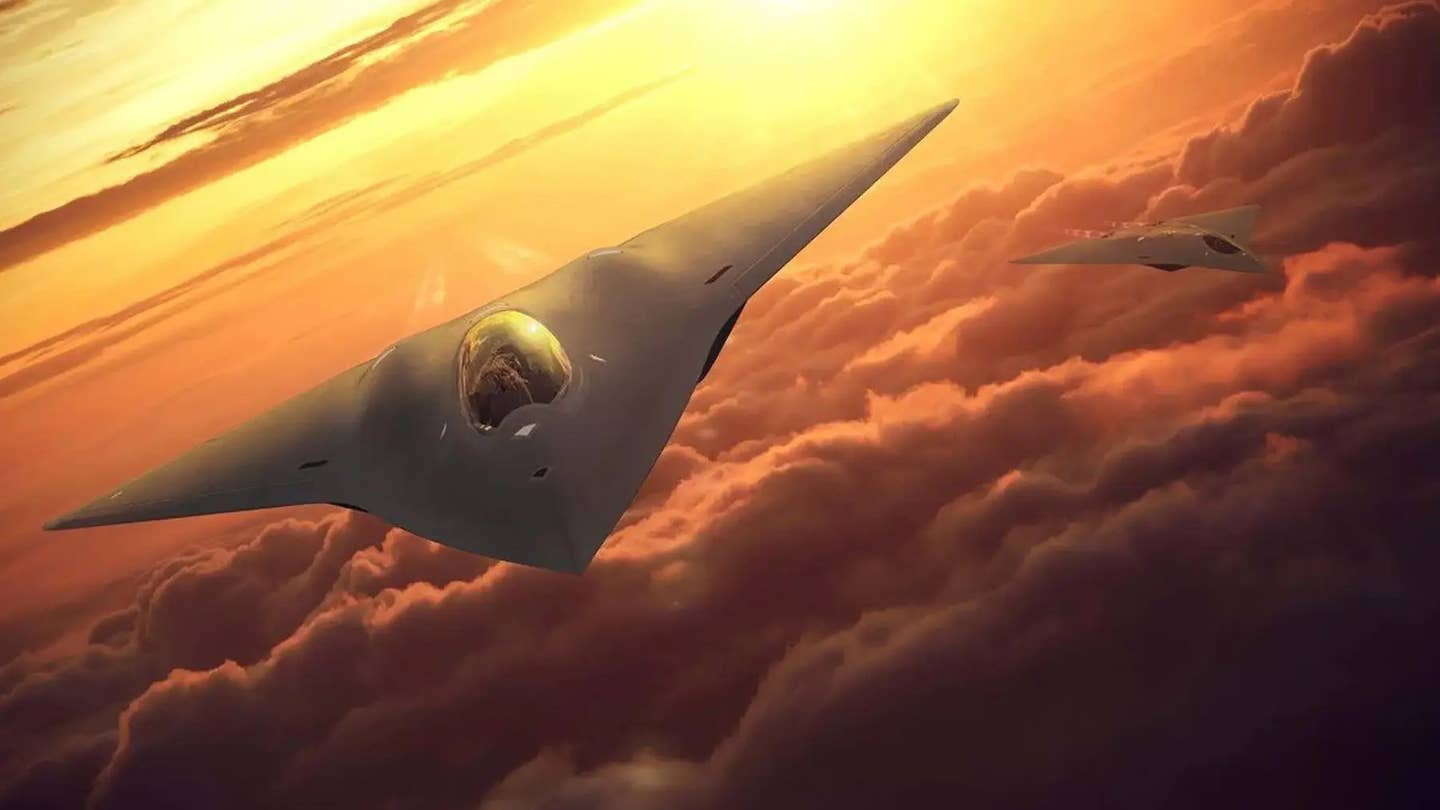
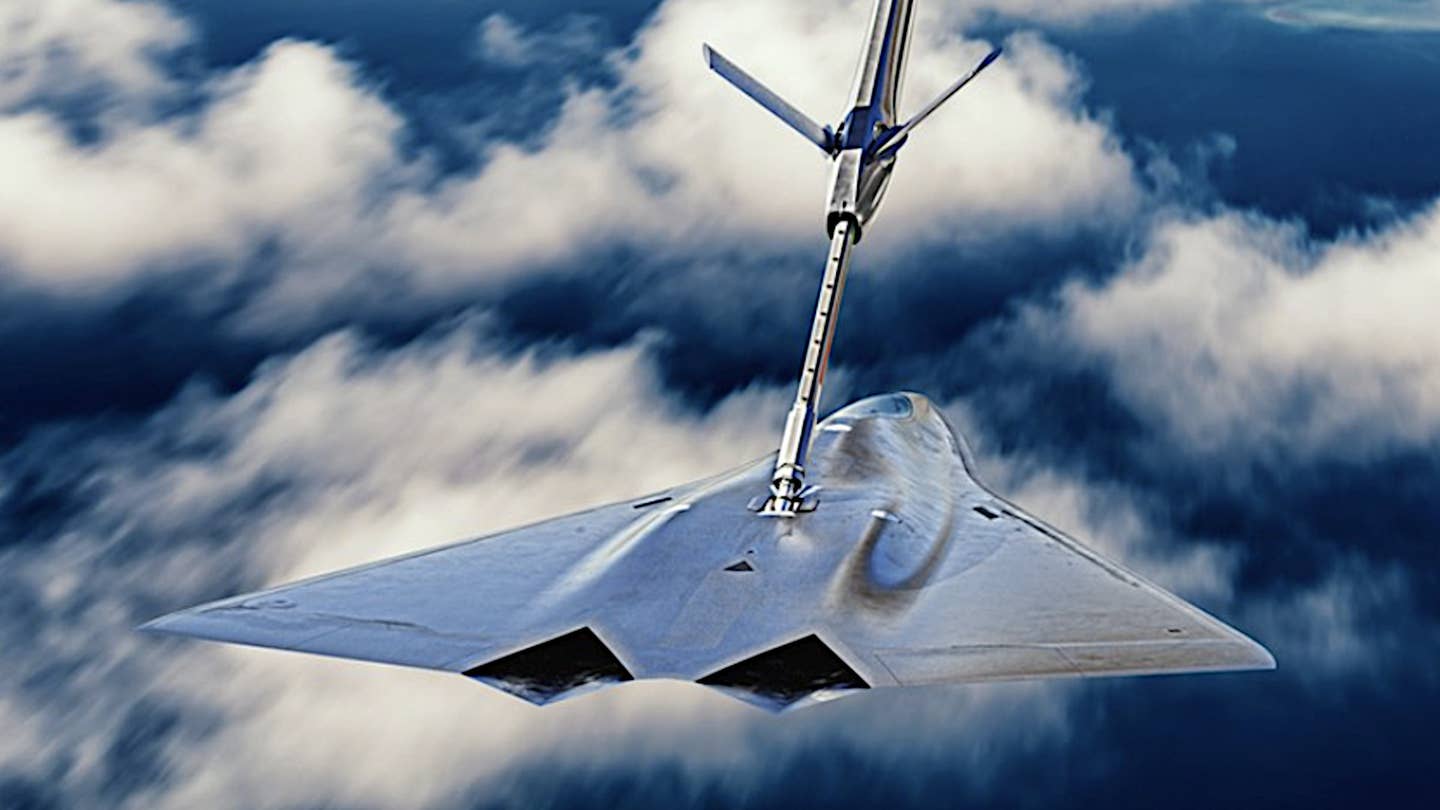
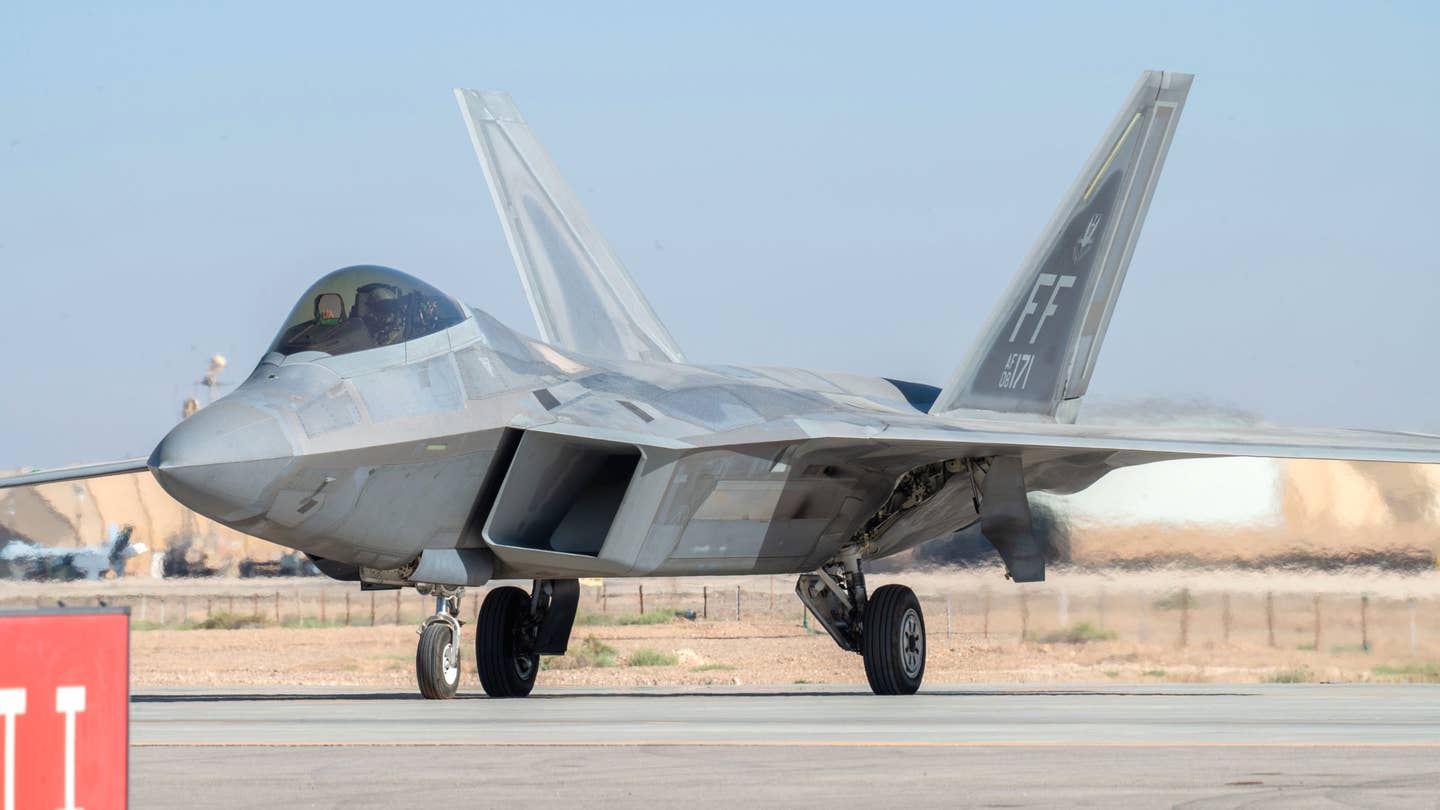
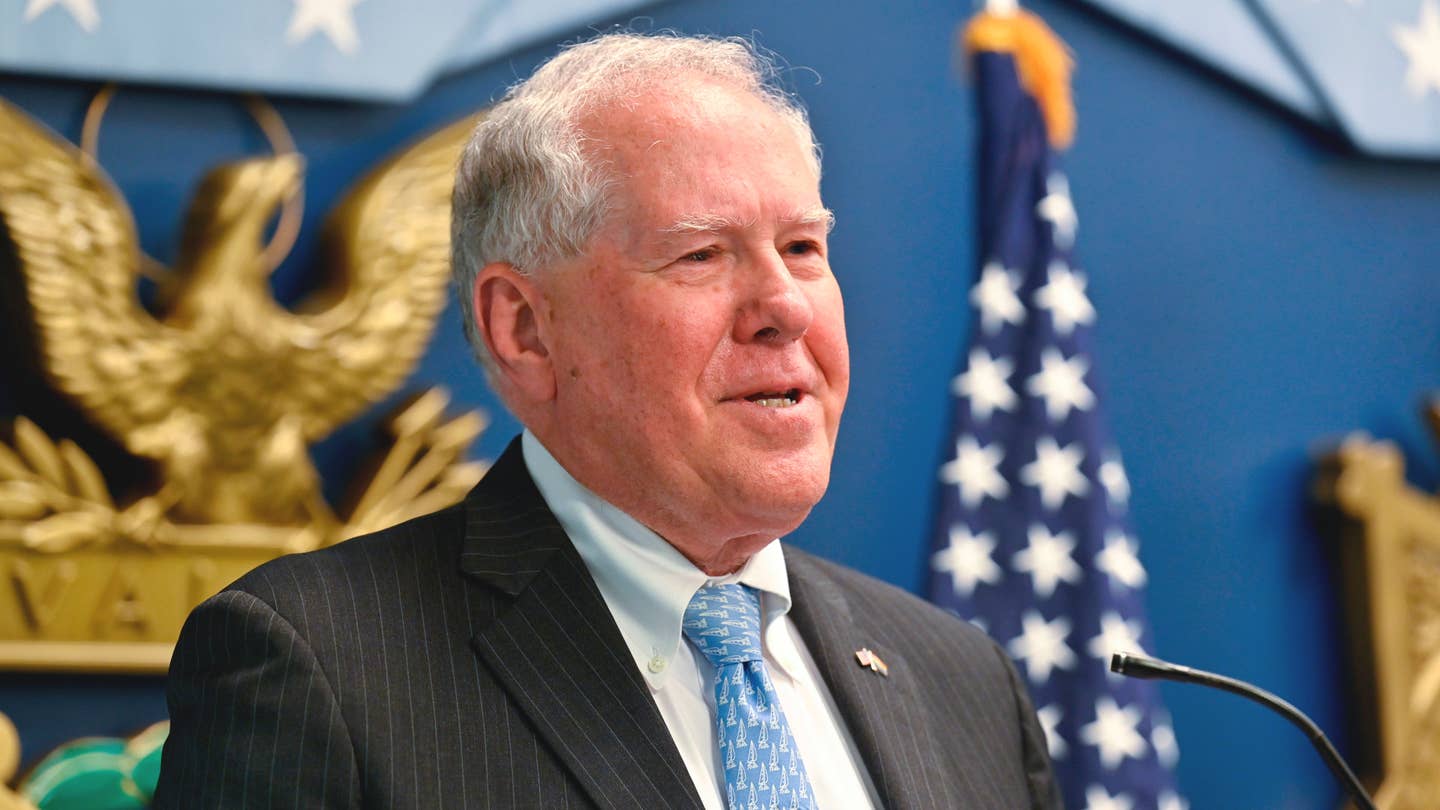
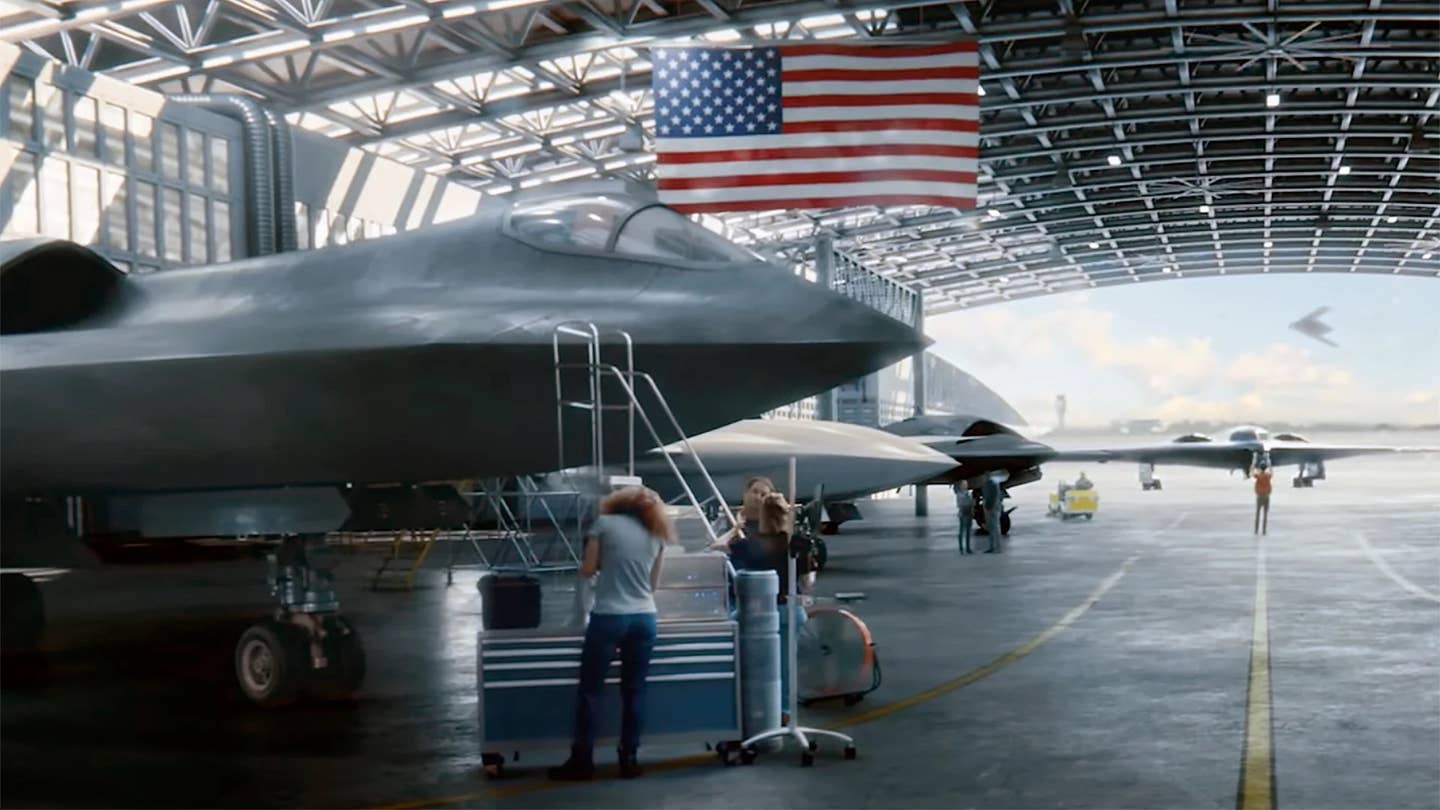
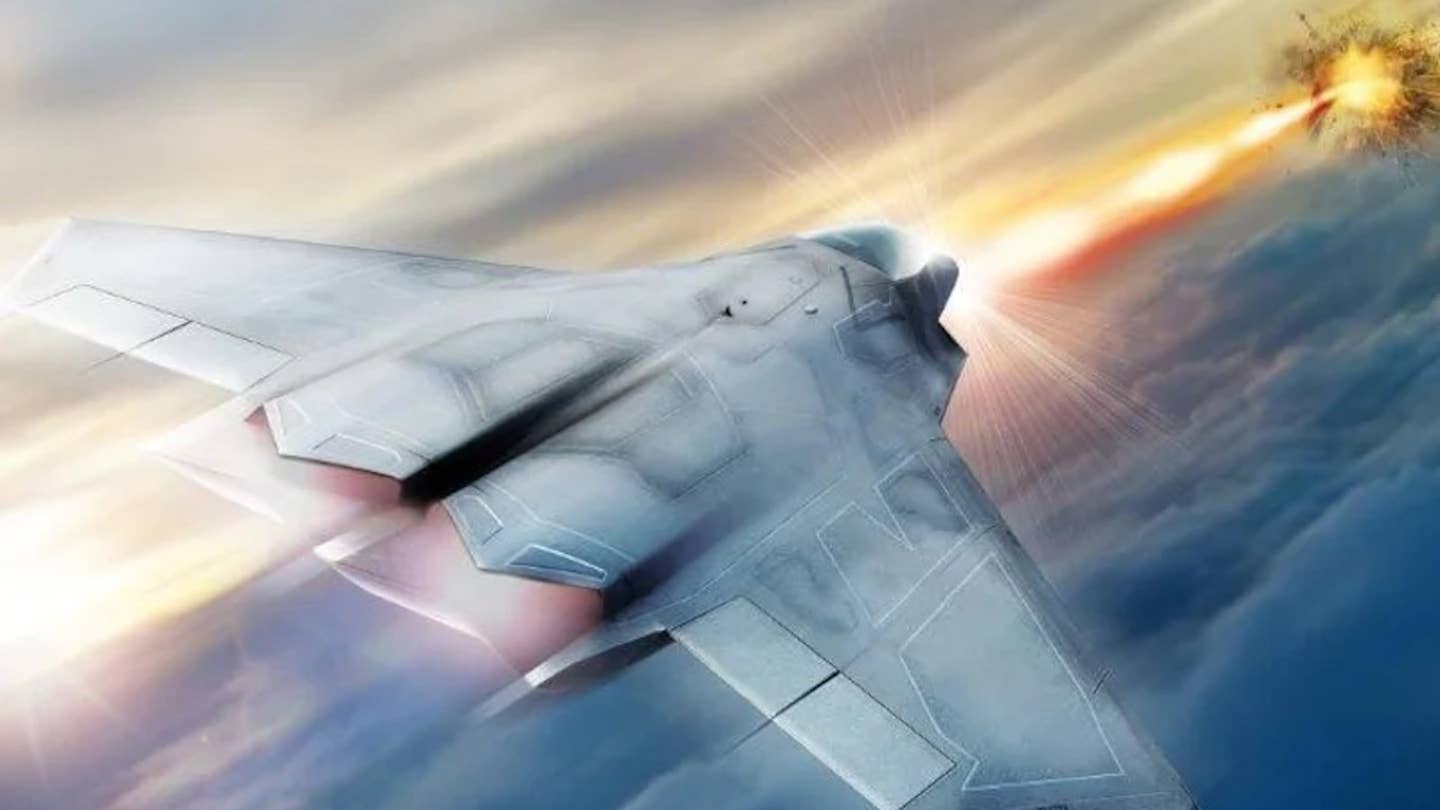
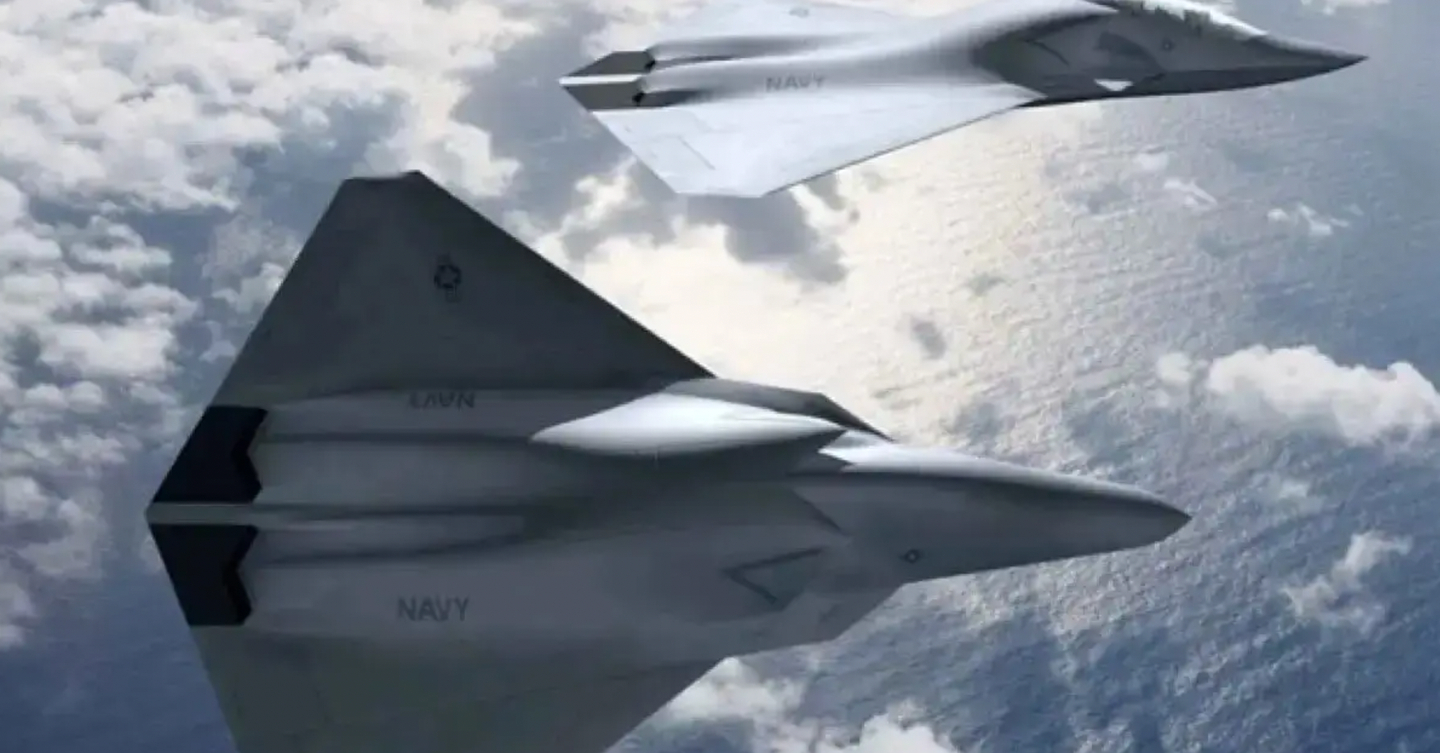
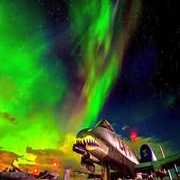







No comments:
Post a Comment